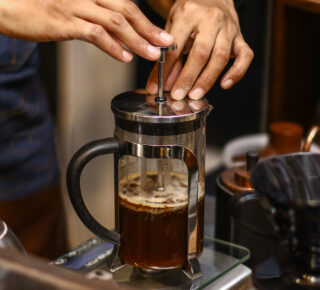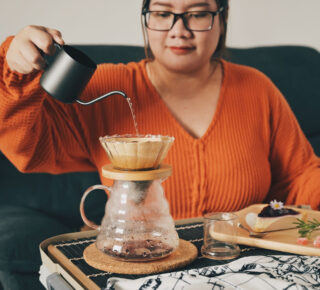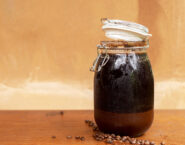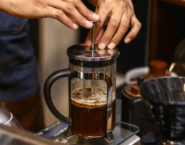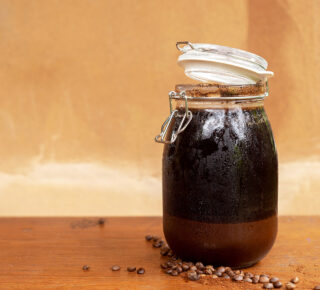
Espresso is not a type of coffee bean or even a roast. It’s a coffee drink, named after the method used to brew it. (When people ask, “What is espresso coffee?” they are often surprised to hear that answer!)
While “s,” not “x,” is the second letter of espresso—and the word is pronounced eh-spreh-so—it’s understandable that people often associate this type of coffee with “express,” because it is a quick process. It uses high pressure to force nearly boiling water through finely ground coffee in about 20–30 seconds. The result is a concentrated shot of coffee with two layers: the crema, or velvety, golden-brown top layer; and the liquid, or the sweet, acidic body of the shot.
While shots of espresso are delicious to drink on their own, they also are used to make many popular coffee drinks such as cappuccinos and lattes. You can find a variety of roasts that work well for this brewing method, but coffee that is specifically roasted for espresso will best bring out its characteristics.
Sippable Fact
Is espresso stronger than coffee? In terms of taste, yes – espresso is denser and more concentrated than brewed coffees, so it has a stronger flavor.
In terms of caffeine, though, is espresso stronger than coffee? Not necessarily – it depends on how much you drink. According to USDA nutrition data, espresso typically has 63 mg of caffeine in 1 ounce (one shot), while brewed coffee has 12 to 16 mg of caffeine per ounce. The exact amounts can vary based on a number of factors, but if you’re drinking one 8-ounce cup of drip coffee, you’re probably consuming more caffeine than one shot of espresso.
Here’s how to make espresso coffee so that you get the best freshness and flavor—with tweaks that can help you find your perfect cup (or shot).
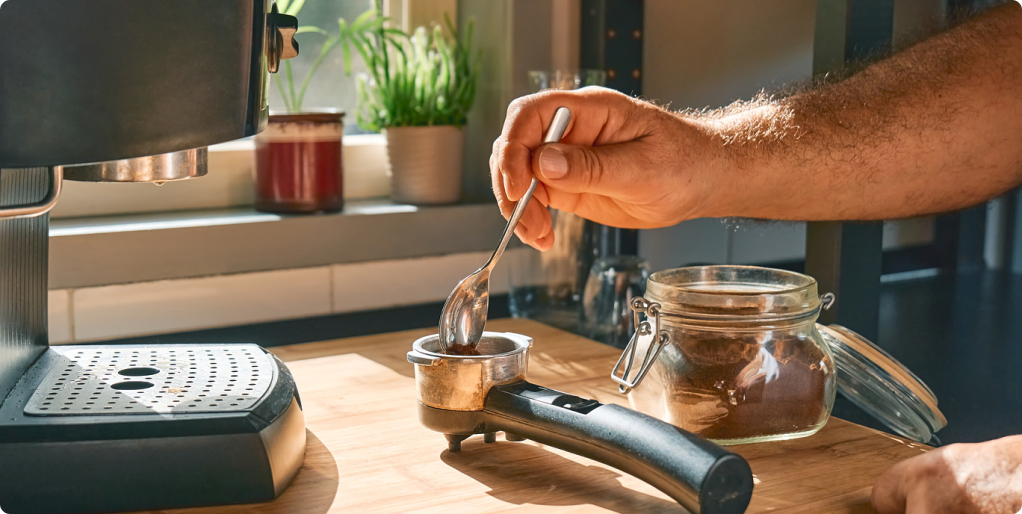
Equipment
To make espresso, you will need:
- Espresso machine
- Scale
- Grinder (optional, but preferred; some machines will come with a grinder)
Espresso machines
There are many different types of espresso machines, but a good way to begin narrowing down what will work best for you is to consider your current comfort level and/or how involved you want to be in the brewing process. There are manual, semi-automatic, automatic, and super-automatic options available.
Beginner/Less hands-on: Automatic machines
The machine controls both the pressure and amount of water, so you’re giving up the ability to customize, but it’s a simple experience for you, and you’re not tied to the machine during brewing. Some automatic machines have timers you can set in advance, and some have coffee grinders built in. This option will work well if you’re a less experienced brewer looking for simplicity and convenience—or if customization simply isn’t a priority for you.
Intermediate/More hands-on: Semi-automatic espresso machines
The machine creates the pressure for you, but you decide how much water to use. You need to pay close attention so you can shut the machine off at your preferred time, but it’s easy to use. Some semi-automatic machines have an option for steaming milk as well. This machine is a good fit if you want to be able to maintain some ability to customize—and make both espresso and Americanos.
Advanced/Fully hands-on: Manual espresso machines
You are fully in control of the brewing process, including the brew time, water flow, and pressure, which allows you to create a highly customized shot. (There’s a lever to help create the right level of pressure, but some machines can be physically demanding.) This is a great option if you’re a more experienced brewer or just prefer to make your espresso your way.
Deeply committed/Least hands-on: Super-automatic machines
This is a unique category—super-automatic machines take care of everything for you, but they require a significant financial investment, so they’re likely not the best fit for a new espresso drinker. Once you select the type of espresso drink you want, a super-automatic machine will automatically grind the beans for you and create your drink. You have little to no ability to customize—the brewing process is based on pre-programmed settings—but the espresso will be very fresh, and you just have to press a button. This is a smart option for an experienced brewer or committed coffee hobbyist willing to make an investment for the greatest level of simplicity and convenience.
As you’re looking into espresso machines, here are a few other key factors to keep in mind—and questions to ask yourself.
- Cost: What’s your price range for your machine? Consider additional costs as well, such as any accessories you might want to buy.
- Size: What will fit in the space you have?
- Capacity: How many espresso shots will you be making, and how frequently?
- Safety: If you pick an automated machine, does it have all the safety measures you want—such as automatic shut-off to prevent overheating?
- Design: What fits your aesthetic and the style of your kitchen?
- Cleaning and maintenance: The more bells and whistles, the more maintenance is probably required—what are you willing to do to keep your machine clean and in good order?
- Noise: If you’re sensitive to noise—or want to avoid disturbing others—how much noise is acceptable for you?
- Customer reviews and ratings: There’s nothing like hearing from others who have used a coffee maker—what are they saying about your top choices?
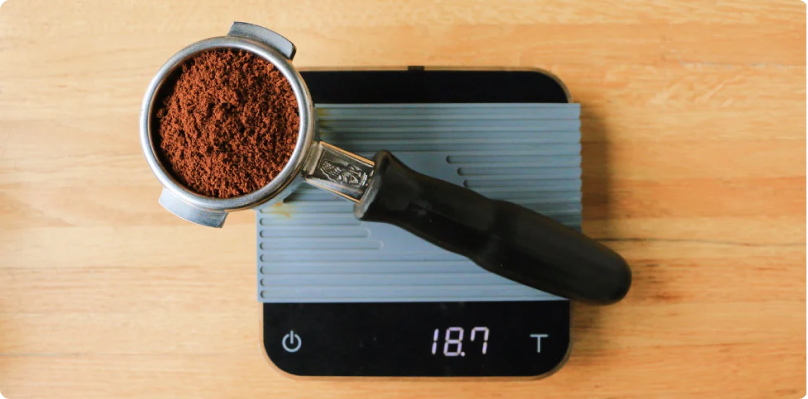
Scales
Using a digital scale will help you brew more consistent espresso—and keep track of what worked well (or not) for you so you can keep adjusting and experimenting.
Grinders
While you can buy and use ground coffee, buying whole coffee beans and grinding them immediately before brewing guarantees maximum freshness.
There are two types of grinders: burr (or mill) grinders and blade grinders. We recommend using a burr grinder—whether at home or where you buy your coffee beans.
Burr grinders
A burr grinder crushes coffee beans between a moving grinding wheel and a non-moving surface (the two “burrs” in the name). These grinders do a better job of creating a consistent grind, extracting the flavor of the coffee more evenly, and they’re better for the types of coffee that require smaller grind sizes, like espresso or French press. They’re also less likely to overheat the grounds, preserving the coffee’s oils and aromas.
Blade grinders
A blade grinder is less refined than a burr grinder, with a metal blade that spins to grind the beans. It functions a lot like a food processor, so how long you run the grinder determines how coarse or fine the grind is, though it’s not always easy to control. You can’t ensure a consistent grind, which impacts taste. However, you can get to know your grinder over time and determine the right length of grinding time for your preferred cup of coffee
Whichever grinder you choose, always follow the manufacturer’s recommendations while using it, and be mindful of any necessary safety considerations.
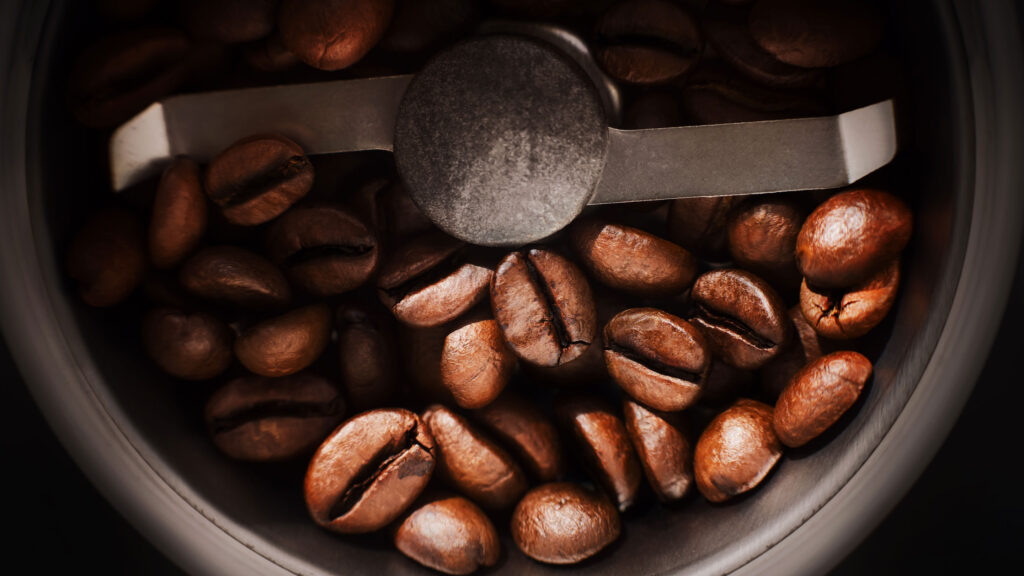
How to grind coffee beans
The size of your coffee grind makes a significant impact on the taste of your coffee. Knowing how to grind coffee beans starts with your brewing method. If you’re having your coffee ground where you buy it, just decide in advance how you plan to brew it.
As a general rule, the longer the coffee is in contact with water during the brewing process, the coarser the grind should be. That’s why espresso, which brews in seconds, requires a fine coffee grind, while cold brew, which can take hours to prepare, typically requires a coarse grind.
Pick your espresso grind size
To find the best espresso grind size, start with a fine grind, then adjust as needed to brew your perfect cup.
| Brewing Method | Size of Coffee Grind |
|---|---|
| French press | Coarse (like rock salt) |
| Cold brew | Coarse |
| Drip | Medium (like kosher salt) |
| Pour over | Medium |
| Espresso | Fine (like table salt) |
Coffee grind size and taste
If you’re not getting the taste you prefer—or if you just want to experiment with your coffee grind—try adjusting in one of two ways.
- Your coffee tastes bitter or sour: it may be ground too fine (over-extracted), so try a larger, coarser grind.
- Your coffee tastes flat or watery: it may be ground too coarse (under-extracted), so try a smaller, finer grind.
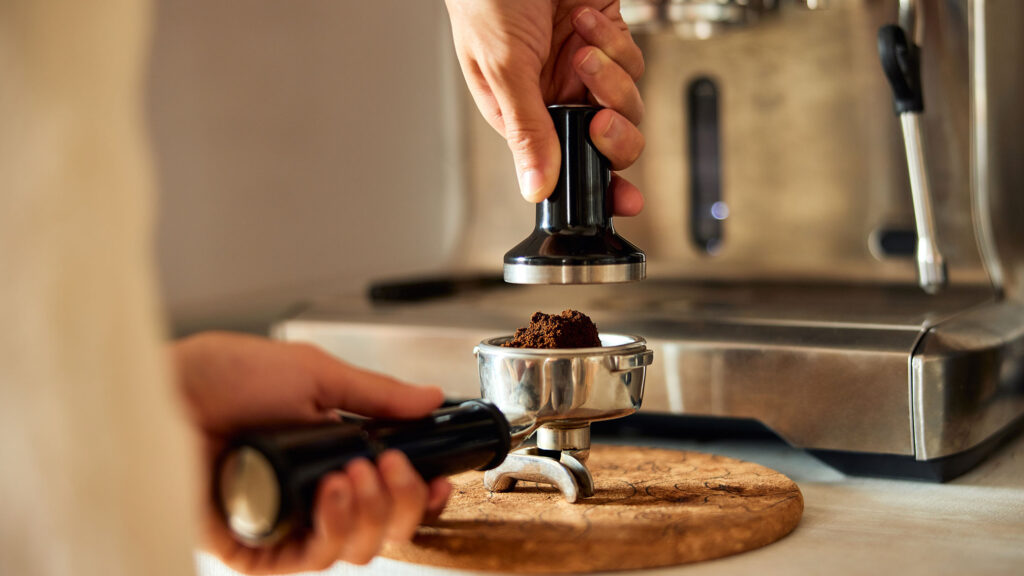
How to make espresso coffee
There’s nothing more convenient than enjoying freshly brewed espresso at home. To start, there are three consistent elements of how to make espresso you’ll love:
Sippable Fact
For espresso, here are the quick numbers you need to know:
- Coffee-to-water ratio: 1 gram of coffee to 2 grams of water (1:2)
- Brewing time: 20–30 seconds of contact between coffee and water
Step-by-step guide: How to make espresso coffee
While your espresso-making experience will differ depending on the type of espresso machine you use and its level of automation, here some of the general steps. While some of the terminology may be new, if you’ve watched the baristas at your favorite coffee shop, you’ve probably seen this process in action.
- Warm your cup—it will keep the cup from cooling off your freshly brewed espresso.
- Dose (put) your ground espresso into the portafilter. That’s the tool with a long handle, a basket that holds the coffee grounds in place while brewing, and a spout where the brewed espresso comes out.
- Ensure the coffee grounds are evenly distributed in the portafilter basket (it’s okay to use your finger, but there are special tools that can help with this). Then, use a tamper to pack the grounds into a compact puck in the basket. This will help the water saturate the grounds more evenly.
- Clear the group head (the part of the machine that the portafilter attaches to that dispenses the water) by running the machine briefly. This is that signature blast of quick steam you’ve seen and heard at the coffee shop! Insert the portafilter handle into the group head and start brewing right away, so the top of the puck doesn’t burn.
- Stop the machine after 20–30 seconds, if it’s not automatic—otherwise, once it stops, your espresso is ready to serve. Enjoy!
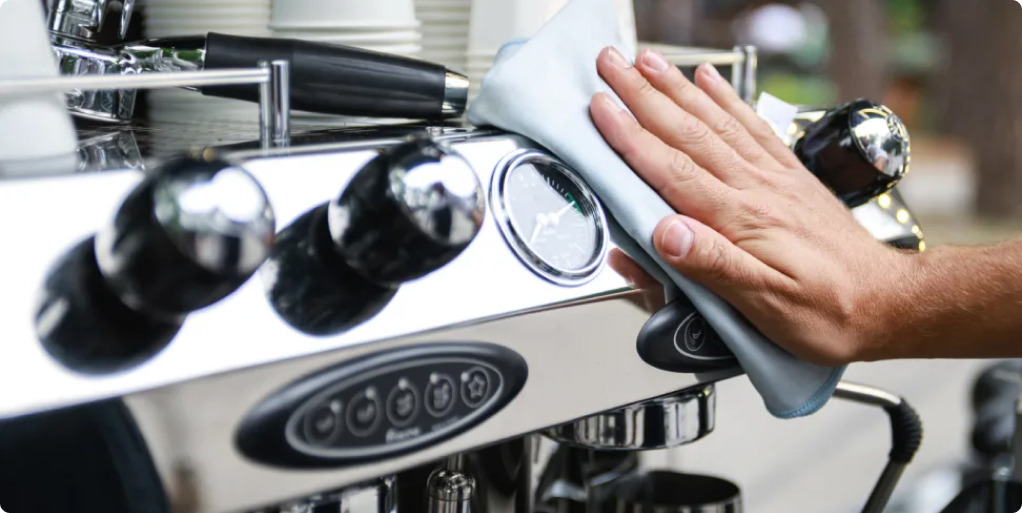
How to clean up after making espresso
It’s important to clean your equipment and tools after each use, following the instructions specific to your machine.
Generally speaking, don’t forget to remove the portafilter and discard the puck of used coffee grounds. Clean, rinse and dry the portafilter handle, and rinse and brush the group head.
Pulling beautiful shots of espresso like a barista? Now’s the time to try other coffee brewing methods like drip, pour-over, French press, and cold brew.
Safety should always be a top priority when preparing, serving, or drinking any hot beverage—please take all necessary precautions! Be sure to follow all the specific instructions for use, cleaning, storage and maintenance provided with your brewing equipment and tools (including but not limited to brewing machines and devices, grinders, kettles, scales and filters). Be mindful of how hot liquids and equipment may get during the brewing process, and if you grind your coffee, be particularly careful with the sharp blades.

